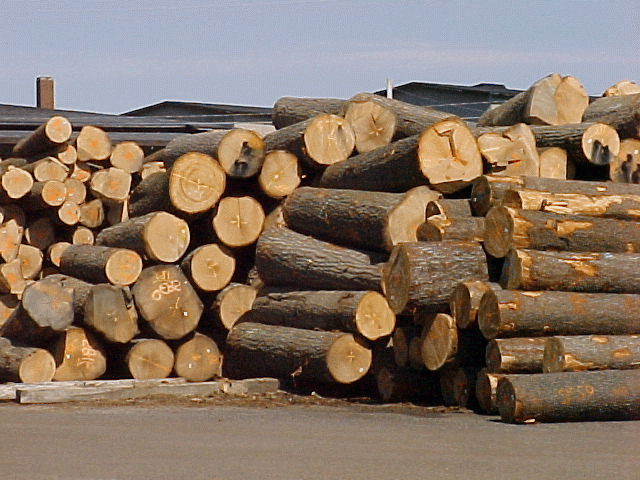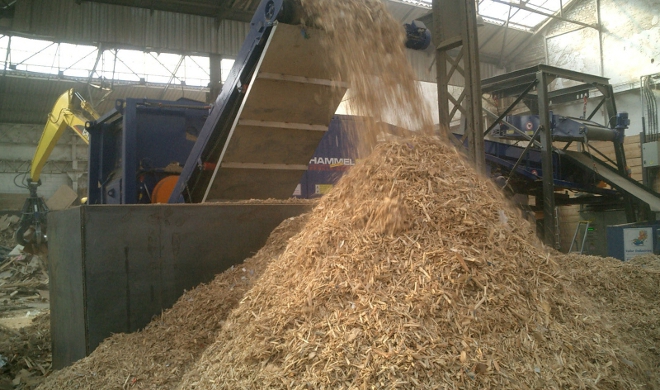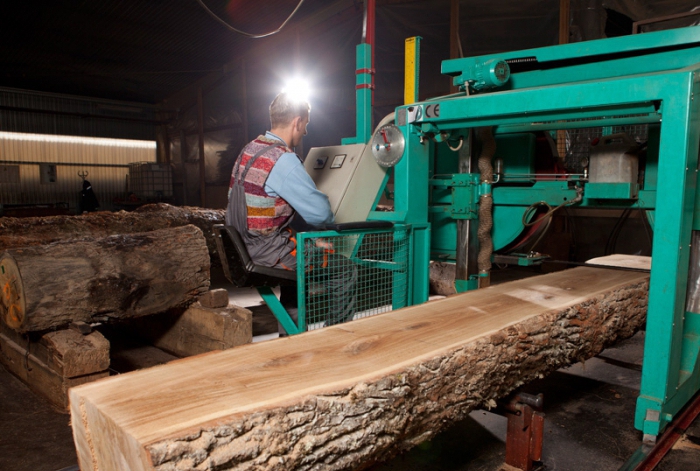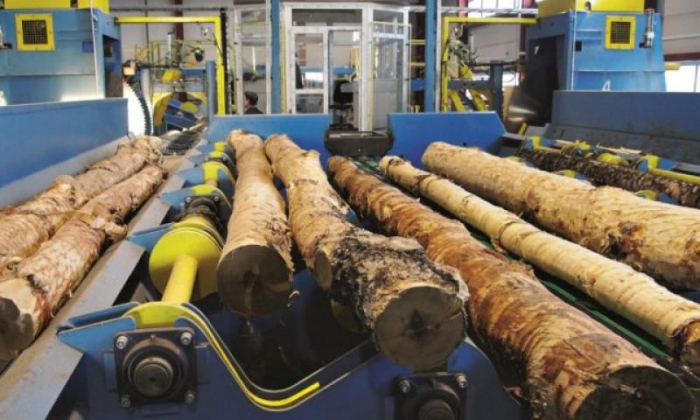Wood is a natural material from which a person has learned to make semi-finished products and other products. However, for industry, a simple tree is not of great value, so it must be processed on special equipment. But there are many nuances and interesting points. Let’s talk with you about what wood processing is and what is the process technology.

General useful information
The most valuable that comes from recycled wood is paper. Today, the paper industry is of great importance. Every day, hundreds of tons of paper are produced in the world. After all, this product has a different purpose: household, industrial, etc. One cannot fail to say that the most expensive furniture is made of wood.
In principle, there is a huge amount of materials that are made from wood. Today chipboards have become extremely popular. They are somewhat similar to a board, but less homogeneous and most often have dimensions of 205 x 520 cm. Let's talk about everything in more detail. First you need to understand the types of wood processing.
Chemical processing
Forest chemical technology allows you to get the following products: rosin, charcoal, turpentine, acetic acid, etc. From this we can draw a completely logical conclusion that this is an extremely popular method. It is based on hydrolysis - the reaction of polysaccharides and water. The result is monosaccharides that are processed by the biochemical method. After this, it is possible to obtain products such as glucose, ethyl alcohol, as well as protein substances.
If we consider a purely chemical treatment, then furfural is obtained by this method. The latter is the basis for the manufacture of medicines, plastics and more. It should be noted that deciduous trees are most often used as the main raw materials: beech, aspen, birch, ash, etc. Of course, chemical wood processing lines are quite complex and require a lot of attention, as well as highly qualified specialists. A much simpler way, which we will now consider.

Mechanical restoration
The essence of this method is to change the size and volume of wood. It is easy to guess that in our case this is achieved mechanically, if it is easier to say, then by cutting, cutting, planing, milling and so on. For example, chips are first obtained from the feedstock, and then chipboard material is made with which almost every one of us is familiar. But for you to understand, wood chips are made from technological waste, and not from solid wood.
This approach not only saves money, but also reduces wood consumption. Despite the fact that the chemical treatment is more complex and subtle, it is also not so simple. Depending on the size, type of wood and further use of the material, various machines are used, which we will talk about a little lower. Every day the technology is becoming more sophisticated, which allows to achieve better results. Mechanical products were widely used in construction; fuel briquettes and wood pellets are also widely used.
Basic processing equipment
Automated equipment allows not only to increase the productivity of workshops and factories, but also significantly reduce the number of industrial injuries, which is important.Depending on the volumes, as well as the direction of processing, both simple aggregates and entire complexes can be used. Let's look at the main machines:
- Shredders - used to shred waste of various sizes. As the main working body, cutting knives are used. The stronger they are, the better.
- Slow-speed shredders - characterized by high productivity and reliability. Allow to receive chips of 8-10 mm in size.
- Briquetting press - allows you to get briquettes used for heating a room or in industry. It is characterized by functionality - the ability to work with various types of materials, for example, wood, paper.
- Horizontal shredders - designed to handle short as well as long waste.
- Silos - are optional, but simply necessary, especially if the wood processing workshop has large production capacities. Serve for storage, transportation and unloading.

Wood Processing Machines
As noted at the very beginning of this article, machining involves sawing, milling, as well as planing and other similar operations. Therefore, dispensing with the appropriate equipment, even in a small workshop, is unlikely to succeed.
- Planer - used to remove the surface layer of wood. In addition, the surface is polished during planing. Modern machines allow you to process both sides of the board in one go. The chips, as it was before, are not burned, but sent for further processing.
- Milling machines - used for cutting grooves, slots, etc.
- Shelling machines are needed to obtain veneers, and they are chipless (no chips are formed in the process).
- Debarkers allow you to remove bark from logs. Corrugated rolls or circular knives can be used depending on the purpose of the wood. The former are needed for rough processing, the latter for finishing.
Integrated wood processing
Today, the urgent issue is the disposal of waste from the woodworking and timber chemical industries. About 50% of the wood was thrown away, as it was waste. Thanks to the introduction of integrated processing, a significant decrease in this indicator was achieved. So, at the present time it is not 50%, but 30% of waste that is disposed of.
Such figures are due to the fact that, for example, sawdust, wood chips and bark are materials that are extremely inconvenient to transport and store. Moreover, without preliminary preparation (drying, grinding) they cannot be used. However, there is wood processing equipment. In factories with this technique you can get:
- charcoal;
- charcoal briquettes;
- wood waste briquetting;
- gasification - the conversion of solid fuel (in our case, wood waste) into gas.
Charcoal production
According to many experts, this method of disposal is one of the best and most effective. This is due to the great demand of the population and industry in such a corner. This is one of the few ways to effectively clear the forest of deforestation waste. Softwood can also be disposed of. To get charcoal, you need to get equipment for pyrolysis. The essence of the method is the decomposition of raw materials in a special apparatus without oxygen. Today, three groups of coal are distinguished:
- grade A - obtained by waste recycling hardwood;
- Grade B - a mixture of hard and soft leaved wood waste;
- Grade C - a mixture of hard and soft leaved, as well as coniferous waste.
Only the first group has industrial significance. The fact is that such coal is used to make activated carbon and crystalline silicon. In some metallurgical plants, this product is used as a reducing agent.
Production of charcoal briquettes
As practice shows, in enterprises that produce charcoal by pyrolysis, quite a lot of small things accumulate, which does not find any use and most often is simply thrown away. But today there are more conservative solutions, such as briquetting. Who would have thought that wood processing products could go a long way, especially for domestic purposes?
In principle, this is one of the most efficient and cheapest types of fuel. Today, briquettes are usually divided into two large groups: technological and fuel. The latter have found widespread use in everyday life, for example, for burning a fireplace or stove. Less commonly used in thermal power plants. By the way, the combustion product is considered an excellent fertilizer. But it is worth paying your attention to the fact that it is impossible to get a full-fledged briquette by pressing alone. What is needed is a binder, for example, wood resins, oil products or other binders.
Harvesting and processing of woodworking waste

According to statistics, approximately 30% of the global timber supply is located in Russia. This figure corresponds to 18 million tons of fuel, and about 40 million tons of woodworking products are emitted annually. A variety of waste materials can be used as fuel. For example, it can be stumps, sliver, bark, sawdust, slabs, as well as sleepers, plywood or even telegraph poles.
Waste should be transported by trucks, and storage in warehouses. The latter may not have heating, but should be covered and well protected from moisture. This is due to the fact that high humidity prevents the production of high-quality fuel. It is safe to say that timber harvesting and processing in the Russian Federation is rather poorly developed. This is due to the disinterest of the state, as well as the complexity of procurement, transportation and storage.
Chemical paper making
Most entrepreneurs make paper from woodworking waste. This decision is due to small investments and low cost of basic raw materials. In order to obtain a product of the required quality, cellulose is first removed. Further in the aquatic environment is the mixing of fillers, sizing and dyes.
Then create a continuously moving grid of paper pulp, which is subsequently dried, driven through a press, and also wound into a roll. Since the process is continuous, the output of the finished product from the machine is quite large, approximately 800-1000 meters per minute. In principle, chemical wood processing is the best way to make paper of different quality. This approach allows you to clean the forest and recycle waste in the workplace.
What to do with low grade wood?
We examined the main types of wood processing. From this we can conclude that a fairly large amount of waste can still be recycled. But if hardwood is still of interest, then low-grade waste practically does not bother anyone. This is due to the fact that neither quality paper nor good fuel can be made of them.
But there are several worthy solutions. You can make table wood or packaging chips. There are cost-effective enterprises for the production of stucco shingles, brooms, etc. In principle, the processing of low-quality waste wood is gradually finding its place. So, the "tonometer" is increasingly given to animals as an additive to the main feed and used as bedding.
A few important points
As you can see, deep processing of wood will allow not only to properly utilize waste, but also to do a lot of useful things. First of all, this fuel is used not only in everyday life, but also on an industrial scale.We can’t but mention paper production, especially since there are many countries poor in forests that need such products. But the technology of wood processing is quite complex and time-consuming, but profitability sometimes makes you think. For this simple reason, many do not risk working in this direction.
Conclusion
So we examined the main points on this topic. In principle, the direction is very interesting, but the lack of development of the industry scares off most entrepreneurs. But there are reasons for this. For example, to date, a rational method for processing wood bark has not yet been found, although attempts have been made repeatedly. But one can trace the trend that with each year the interest is getting higher. So, furniture factories, farmland, as well as factories that make paper, buy large quantities of raw materials. But the processing of fine wood requires serious lines, so many consider it advisable to buy already prepared raw materials.










hydroxymethyl cellulose costs up to 60 eureka per kg Large-capacity product.